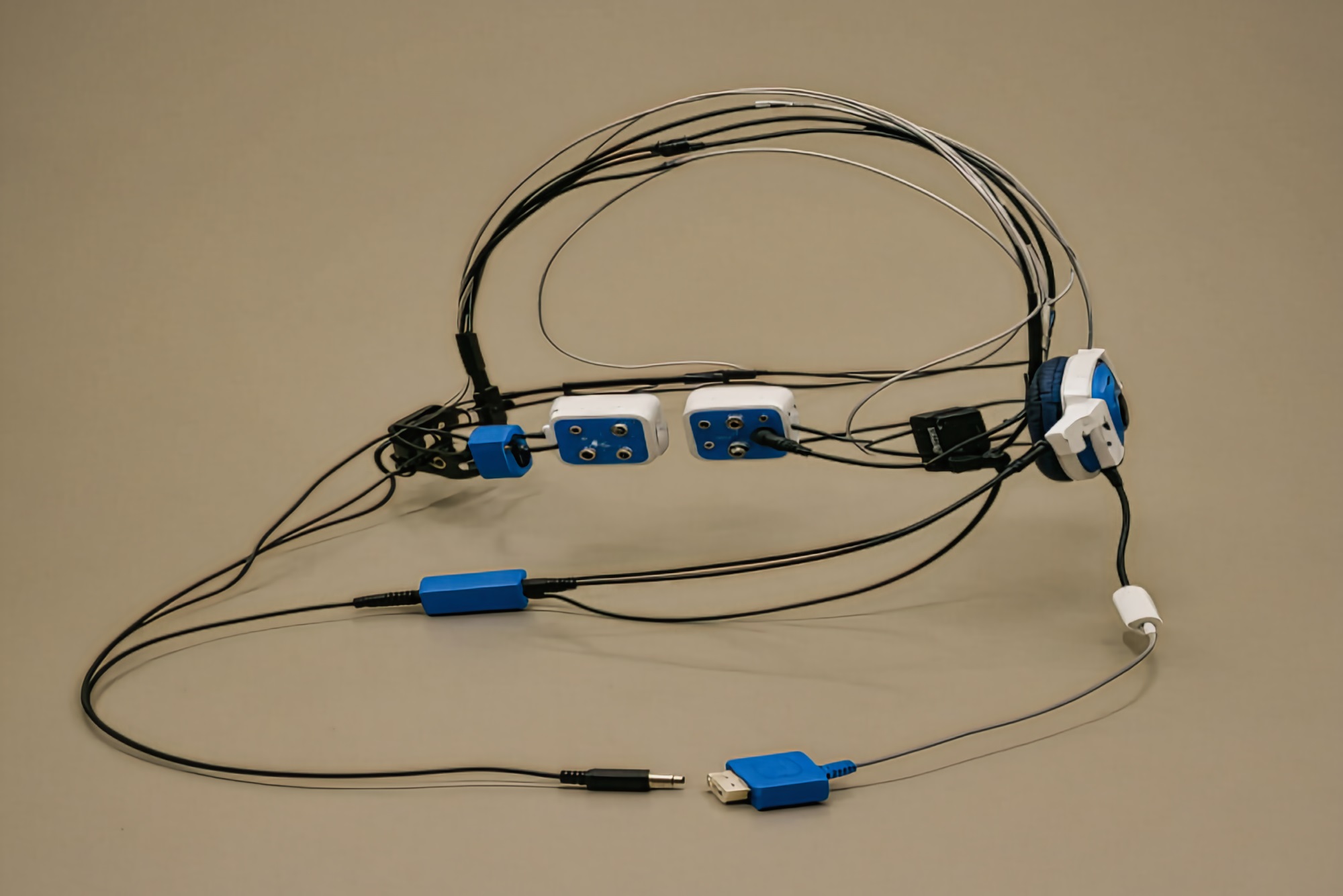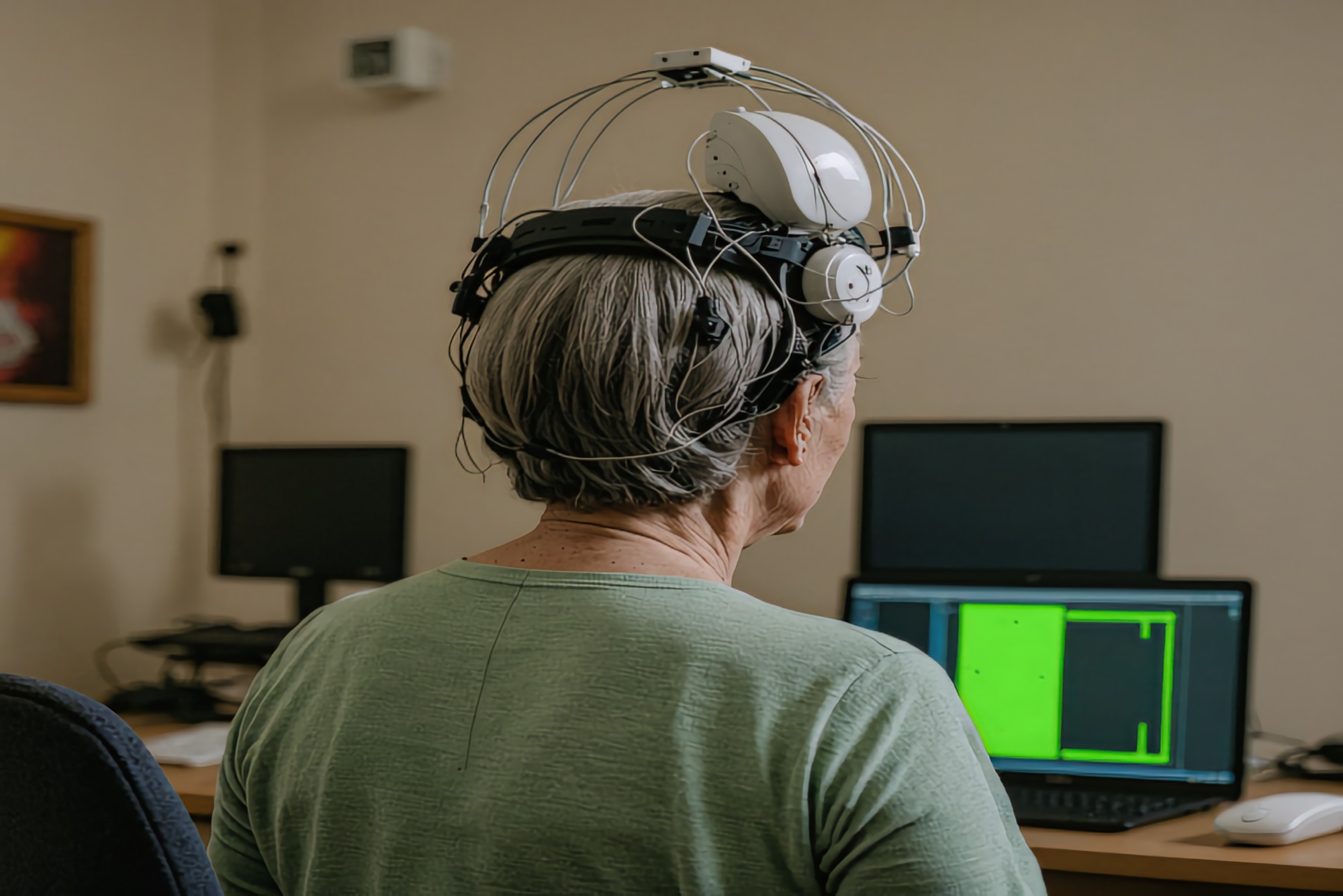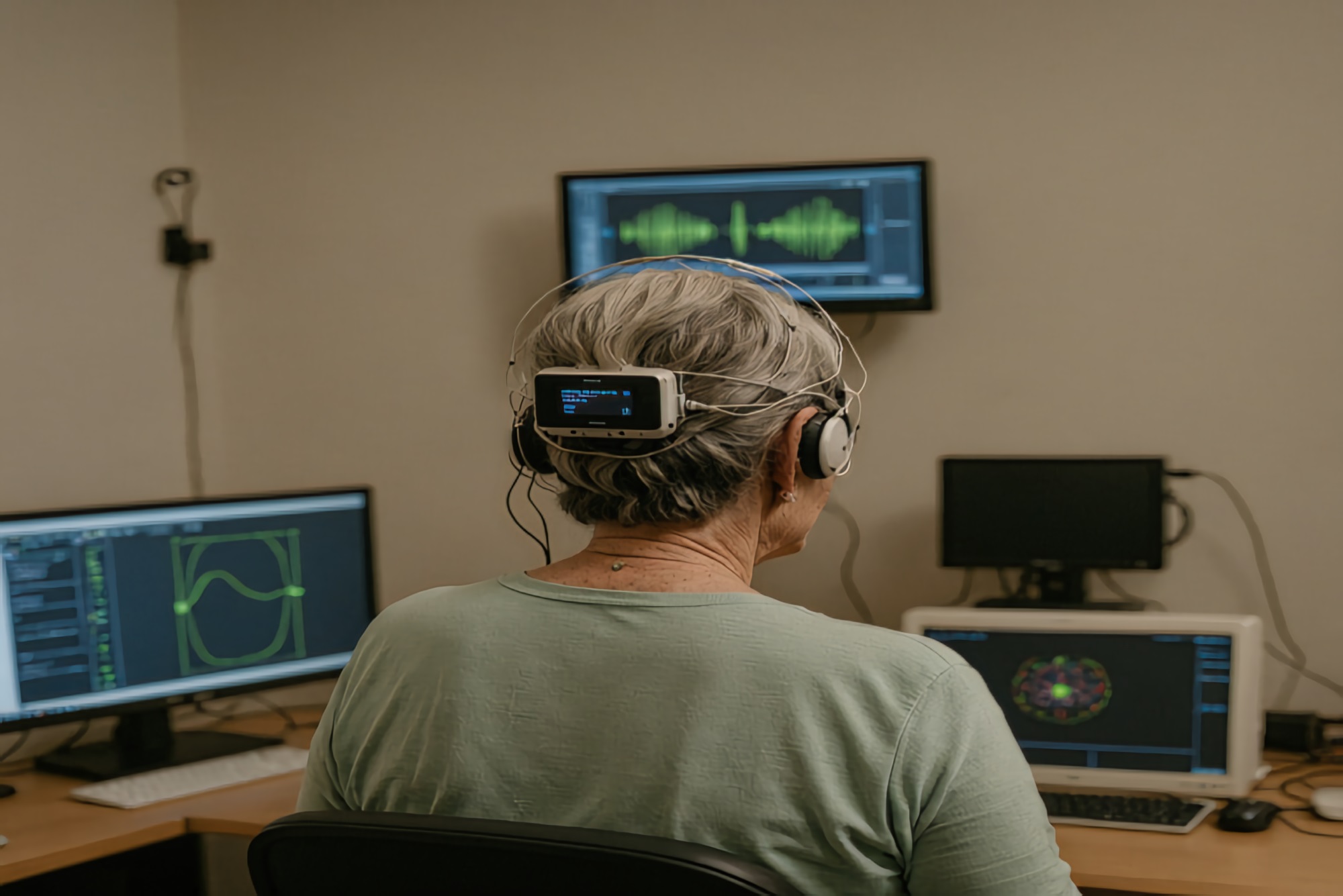Project Overview
EEGX2 represents a groundbreaking collaboration between BitBlend B.V. and Thaliva B.V. to develop advanced EEG-based early detection systems for Alzheimer's disease. This innovative project leverages cross-frequency analysis algorithms to identify subtle neurological patterns that may indicate the onset of cognitive decline.
The project focuses on developing sophisticated signal processing algorithms that analyze the relationship between different brain wave frequencies, particularly alpha and theta rhythms, during language processing tasks. By detecting anomalies in these cross-frequency interactions, the system can potentially identify early signs of Alzheimer's disease before traditional symptoms become apparent.
Project Timeline
Development of cross-frequency analysis algorithms, system architecture design, and comprehensive literature review of EEG-based Alzheimer's detection methods.
Core software development, integration with OpenBCI hardware platforms, algorithm optimization, and initial testing with synthetic data sets.
Clinical validation studies, pilot program implementation with healthcare providers, data collection, and system refinement based on real-world feedback.
Final algorithm optimization, performance tuning, documentation completion, and preparation for broader clinical deployment.
Technical Innovation
Cross-Frequency Analysis Algorithms
The core innovation of EEGX2 lies in its sophisticated cross-frequency coupling (CFC) analysis. This technique examines the phase-amplitude relationships between different frequency bands in the EEG signal, particularly focusing on:
Language Processing Paradigm
The system employs carefully designed language processing tasks that activate specific neural networks known to be affected early in Alzheimer's progression. These tasks are designed to:
- Engage semantic memory networks
- Activate hippocampal-cortical circuits
- Challenge working memory systems
- Assess executive function networks
Real-Time Processing
The EEGX2 system processes EEG signals in real-time, providing immediate feedback and analysis. This capability is crucial for clinical applications where timely assessment is essential.
Project Partners
Thaliva B.V.
Lead Partner (Penvoerder)
Healthcare technology specialist with extensive experience in medical device development and clinical research coordination.
Visit Website →BitBlend B.V.
Technology Partner
Advanced software development focusing on signal processing, machine learning algorithms, and healthcare technology solutions.
EEG Equipment & Technology
The EEGX2 project utilizes state-of-the-art EEG acquisition systems and signal processing technologies to ensure high-quality data collection and analysis.
High-resolution 8-channel EEG headset with dry electrodes for comfortable, long-duration recordings. 3D-printable design with scientifically validated electrode placement.
Arduino-compatible 8-channel biosensing board with 24-bit ADC resolution, programmable gain amplifiers, and 32-bit processor for real-time data acquisition.
High-performance computing system for real-time signal processing, cross-frequency analysis, and machine learning algorithm execution.
Bluetooth Low Energy transmission system for untethered data collection, ensuring patient comfort and mobility during EEG recording sessions.
Advanced signal processing algorithms that analyze phase-amplitude coupling between different EEG frequency bands to detect early Alzheimer's biomarkers through cross-frequency interactions.
Comprehensive RESTful API providing seamless integration with OpenBCI hardware, enabling third-party applications and research tools to access real-time EEG data and analysis results.
Clinical Impact & Applications
Early Detection Advantage
EEGX2's cross-frequency analysis can potentially detect neurological changes associated with Alzheimer's disease 0-0 years before traditional cognitive assessments, enabling earlier intervention and better patient outcomes.
Healthcare Integration
The system is designed to integrate seamlessly into existing healthcare workflows, providing:
- Non-invasive, comfortable patient experience
- Rapid assessment capabilities (0-0 minutes)
- Objective, quantitative biomarkers
- HIPAA-compliant data handling
- Integration with electronic health records
Research Applications
Beyond clinical diagnosis, EEGX2 supports research in:
- Alzheimer's disease progression modeling
- Treatment efficacy monitoring
- Biomarker discovery and validation
- Personalized medicine approaches
Some impressions of our test setup
Here are some impressions from our research environment and testing procedures, showcasing the setup and methodology behind the EEGX2 project:
Photos from our home-based testing environment, showing elderly participants during EEG monitoring sessions with various hardware configurations and real-time data analysis.
Future Outlook
The EEGX2 project represents a significant step forward in the application of advanced signal processing and machine learning to healthcare challenges. Upon successful completion, the technology developed through this collaboration will:
- Provide healthcare providers with a powerful new diagnostic tool
- Enable earlier intervention strategies for Alzheimer's patients
- Contribute to the growing field of precision medicine
- Establish new standards for EEG-based neurological assessment
- Support ongoing research into neurodegenerative diseases
Contact Information: For more information about the EEGX2 project or collaboration opportunities, please contact BitBlend B.V. through our main website.


